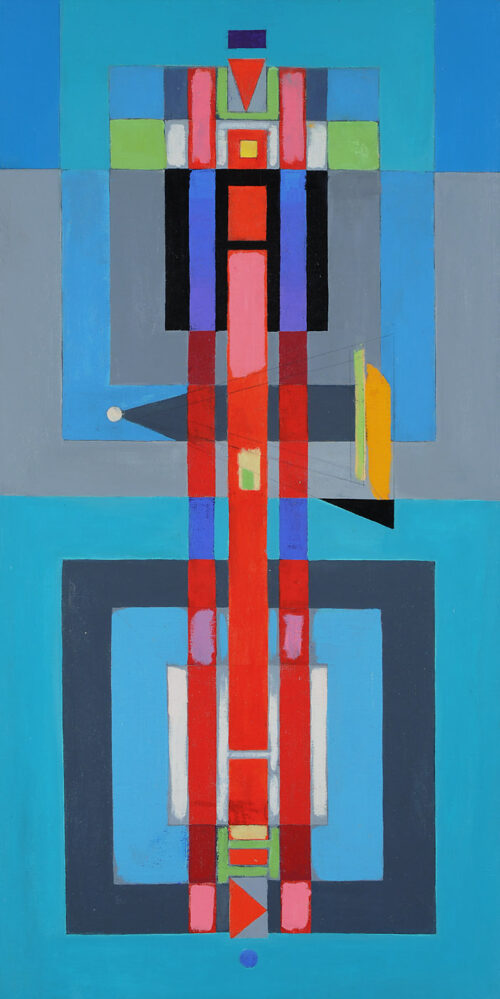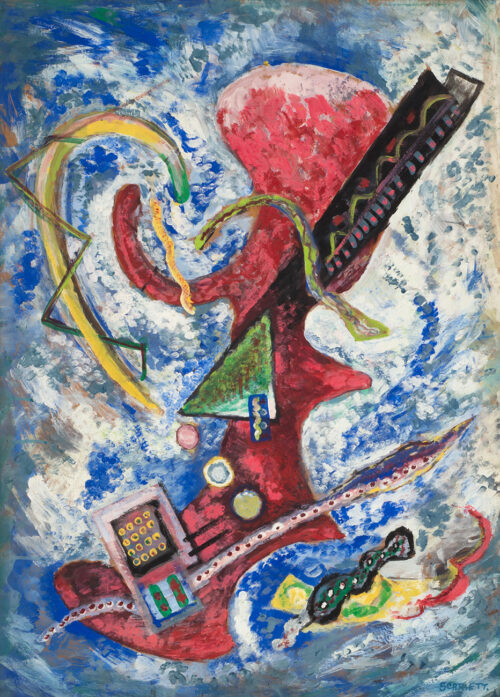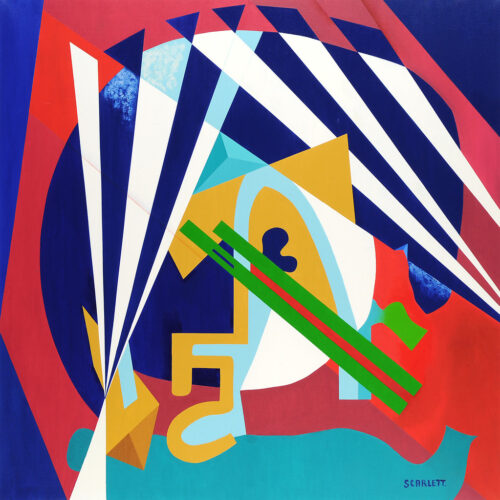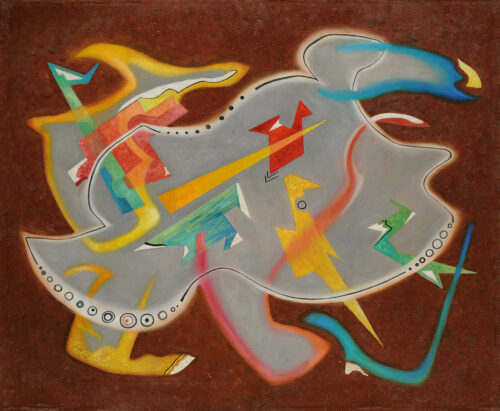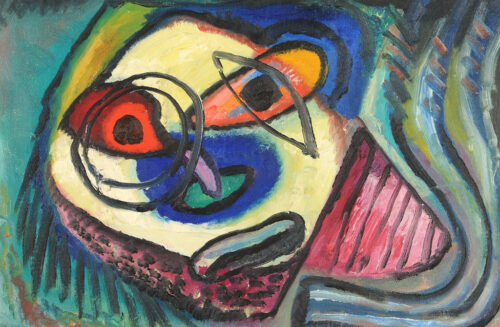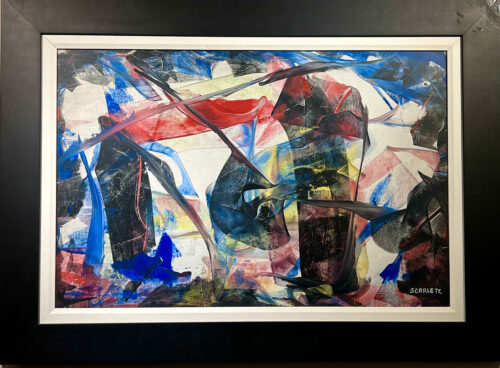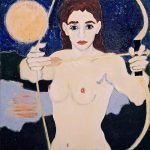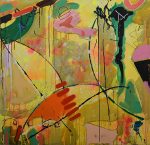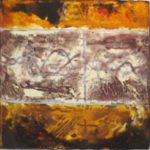1980 Interview with non-objective painter, Rolph Scarlett (1889-1984), at the age of 91
Any presentation on the legacy of Scarlett has to include the history of the Guggenheim Museum’s founding, which was the peak of Scarlett’s career. Along with Russian, Wassily Kandinsky (1866-1944) and the German, Rudolf Bauer (1889-1953), Canadian-born Rolph Scarlett was one of the founding artists of Solomon Guggenheim’s original museum which opened in 1938: THE MUSEUM OF NON-OBJECTIVE PAINTING. He became the third most highly collected artist among Guggenheim’s vast holdings which comprised the Museum’s permanent collection.
Through the Museum’s founding curator and director, Baroness Hilla Rebay’s zealous leadership and advocacy of this radical avant-garde genre of painting and philosophy, the museum became a groundbreaking institution in New York, attracting collectors, critics, and artists. Rolph Scarlett – painter, stage and set designer, industrial designer, and jeweler – was introduced to non-objective in 1923 through a chance meeting in Geneva with Paul Klee. In 1938, after submitting a portfolio of gouaches one paper to Baroness Rebay, he was awarded a Guggenheim Grant which was enough to allow him to paint full-time. Described by Rebay as her “greatest find”, Scarlett became one of the exhibiting artists as well as a featured lecturer at the Museum on the principles of non-objective painting.
The Museum and Scarlett thrived for the next ten years until Solomon Guggenheim’s death in 1949 after which the Guggenheim family – contrary to Solomon’s stated wishes – altered the programming of the museum from its exclusive focus on non-objective to a more general presentation of Modern Art. Hilla Rebay was asked to resign her position and never stepped inside the museum again. (The current Frank Lloyd Wright designed building doesn’t open until 1959 – ten years after Solomon’s passing; the final irony being Rebay was the one who commissioned architect Wright.) Most of Guggenheim’s collection of non-objective that had been so carefully selected and curated by the Baroness Hilla Rebay and Guggenheim – including all of Scarlett’s – were placed in storage and remained largely unseen again until the early 2000s.
Scarlett’s work was featured in several other museum shows, including the Whitney Museum of American Art’s juried annuals in 1951 and 1952. But with the bitter experience of seeing much of his best work placed into storage to remain unseen, as well as losing the important position of the museum’s featured lecturer on non-objective, Scarlett turned his back on New York and moved north to the Woodstock region. There he painted, made jewelry, and had the occasional local show. He also accepted residential teaching positions in Florida and Portugal. He later wrote a memoir, bittersweet in its recounting of the original museum’s halcyon era of 1938-1950, entitled “The Baroness, the Mogul, and the Forgotten History of the First Guggenheim Museum (As Told by One Who Was There)”. Scarlett died at his home in Woodstock in 1984.
Today, Roph Scarlett is increasingly praised as one of the important contributors to the canon of American Modern. His paintings are in the permanent collections of multiple prestigious museums including The Solomon R. Guggenheim Museum of Art; National Gallery of Art, Washington, DC; Los Angeles County Museum of Art; Smithsonian Museum of American Art; Museum of Modern Art, NYC; Montreal Museum of Fine Art, Montreal, Quebec; deYoung Museum of Fine Art, San Francisco, CA, and others.

-
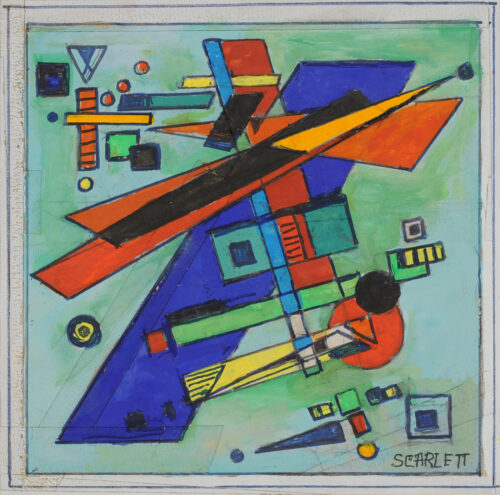
Untitled, ca.1950
$7,800.00 Add to cart -
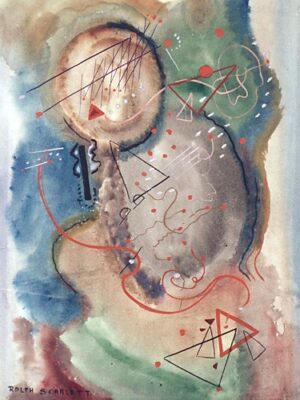
Untitled, ca. 1938
$5,200.00 Add to cart -

Untitled (RS0225)
$5,200.00 Add to cart -
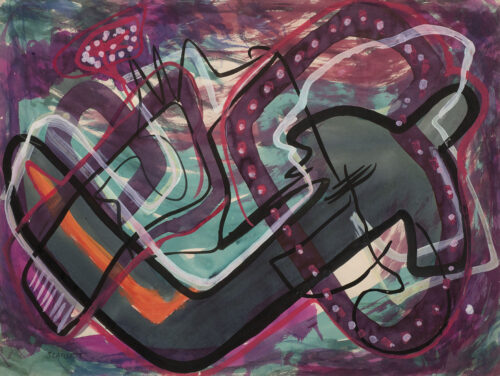
Untitled (RS0196)
$15,000.00 Add to cart -
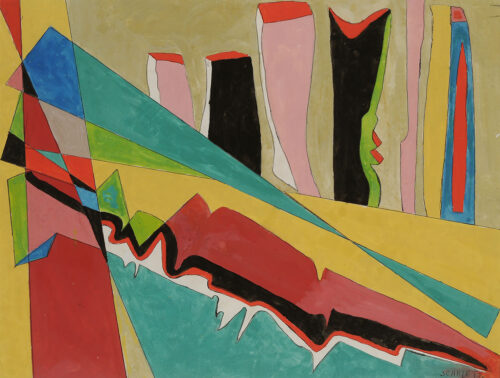
Untitled (RS0192)
$15,000.00 Add to cart -
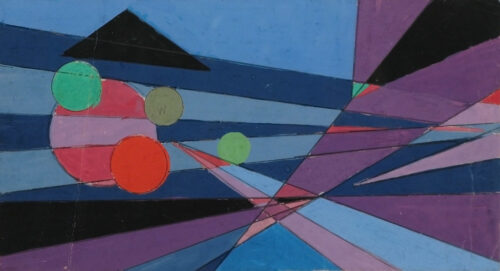
Untitled (Geometric Non-Objective)
$2,500.00 Add to cart -
Sold
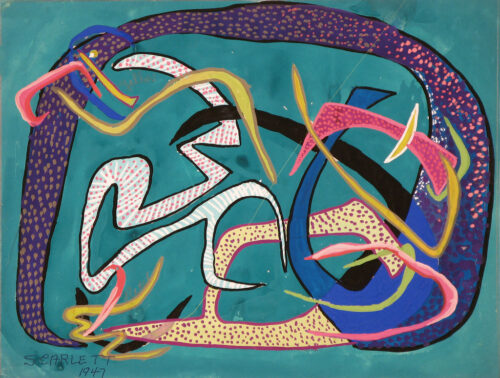
Untitled (Lyrical)
$5,200.00 Read more -
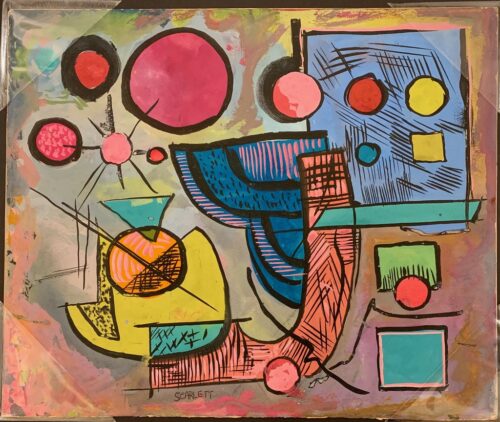
Untitled (Circles and Squares on Purple/Pink Ground)
$4,900.00 Add to cart -
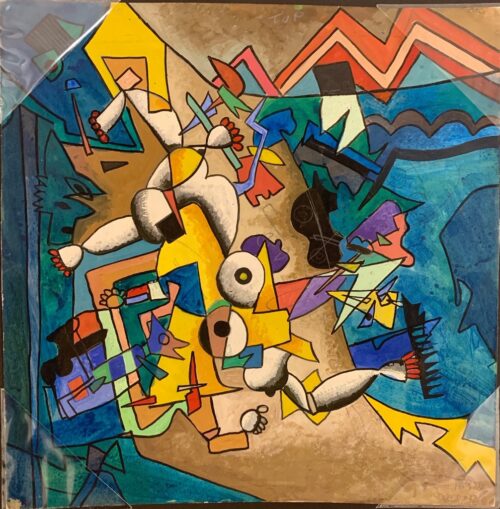
Untitled (Indian Space Painting)
$4,900.00 Add to cart -

Untitled (Pink Circles with Squares on Gray Ground)
$3,900.00 Add to cart -
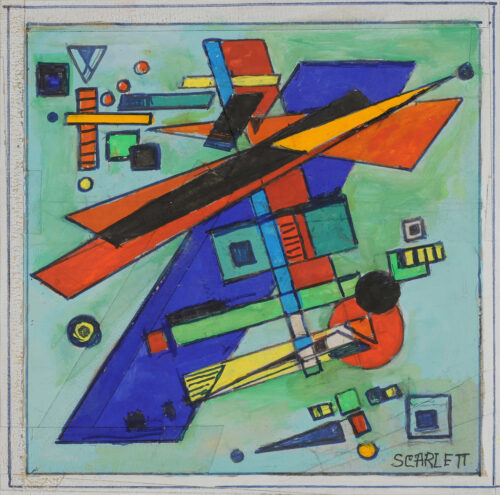
Untitled (Purple Parallelogram) RS-0187
$7,800.00 Add to cart -

Untitled (Orange Ground) RS-0188
$7,000.00 Add to cart -
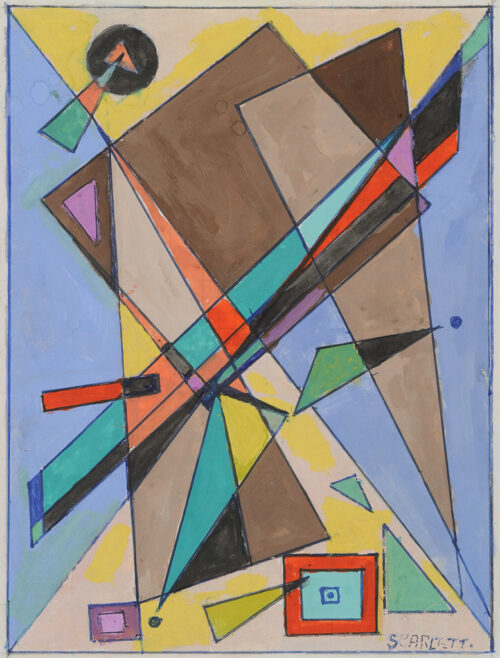
Untitled (Red and Green Squares & Triangles) RS-0189
$7,000.00 Add to cart -
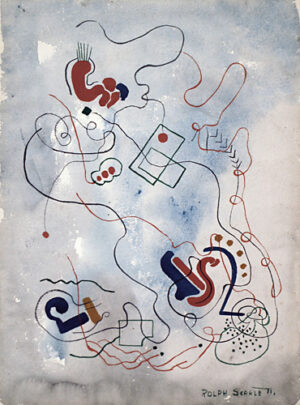
Untitled (Lines, Curls, Shapes on Blue Ground)
$4,900.00 Add to cart


